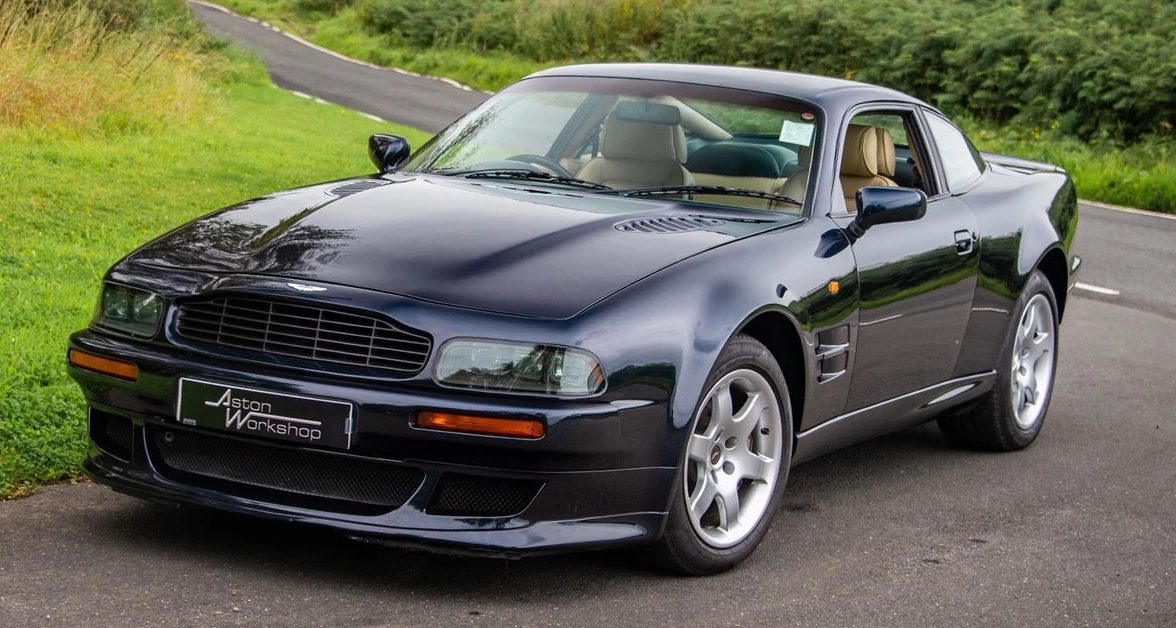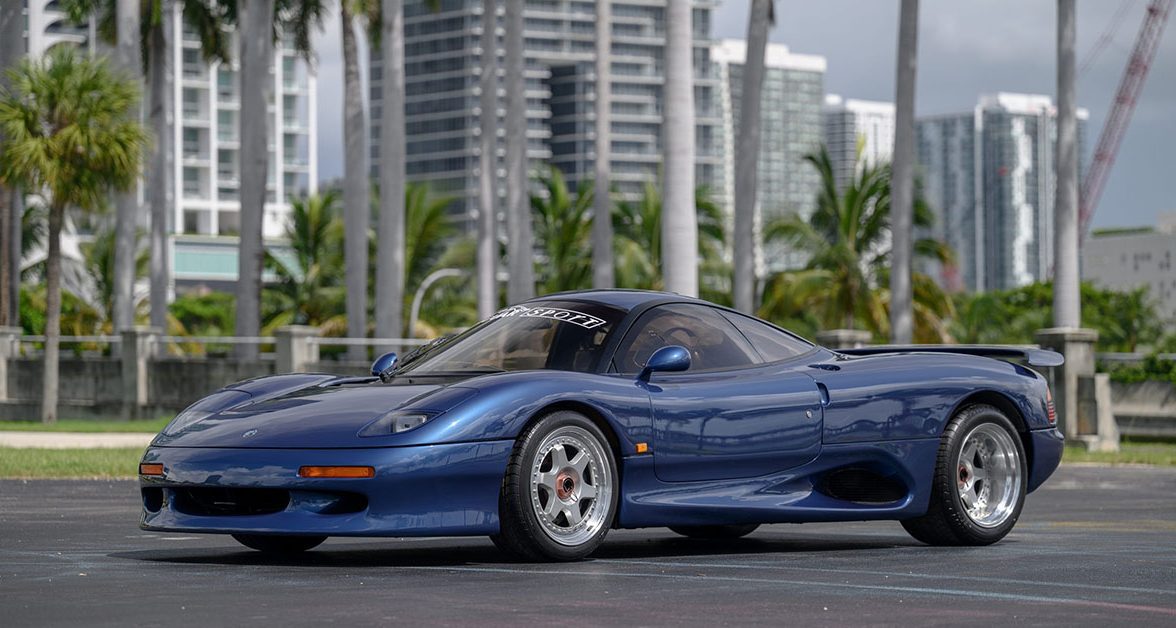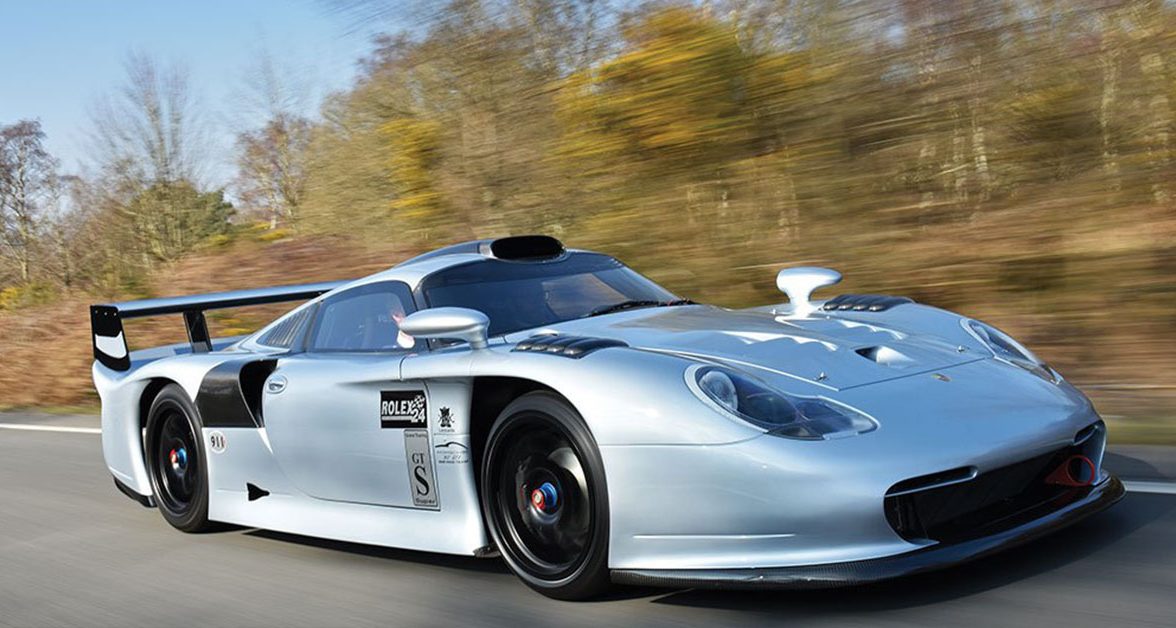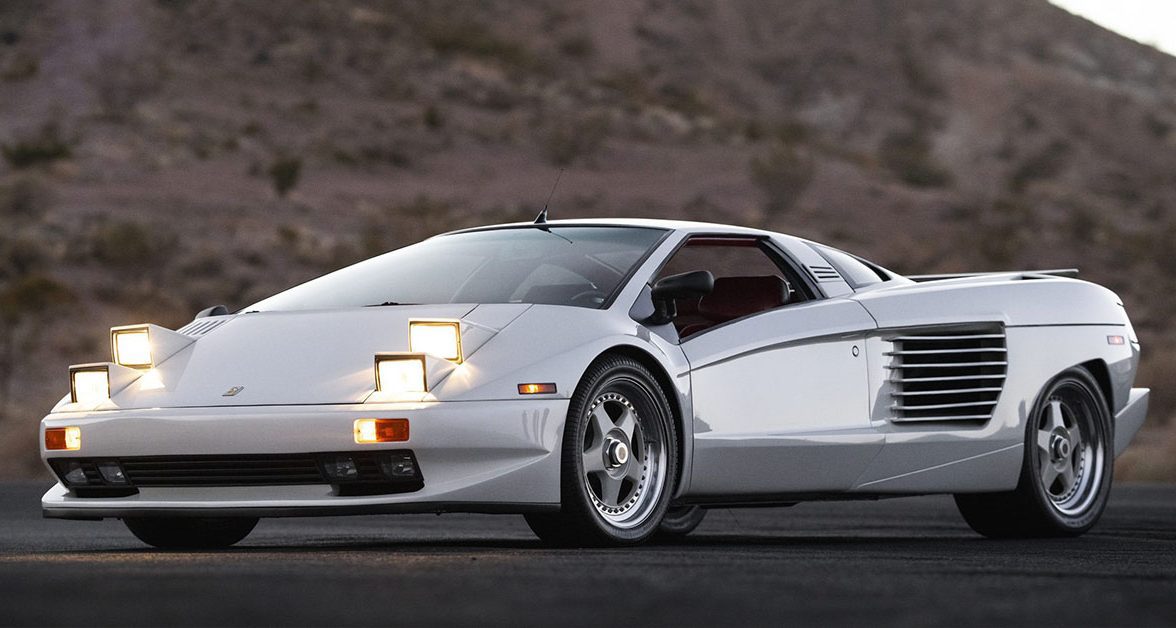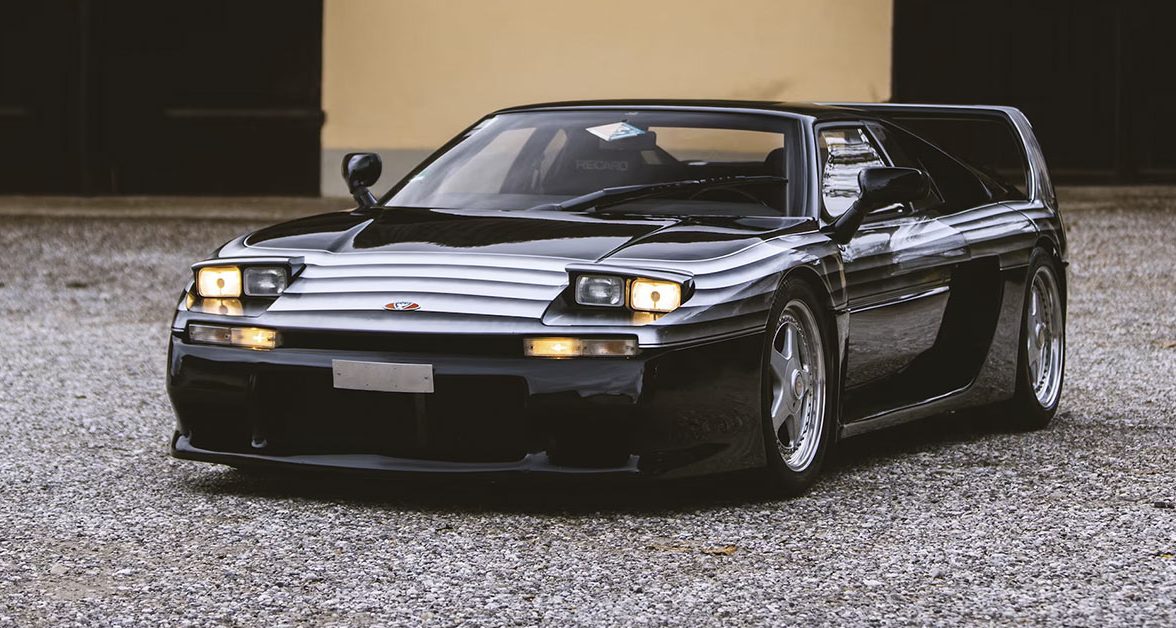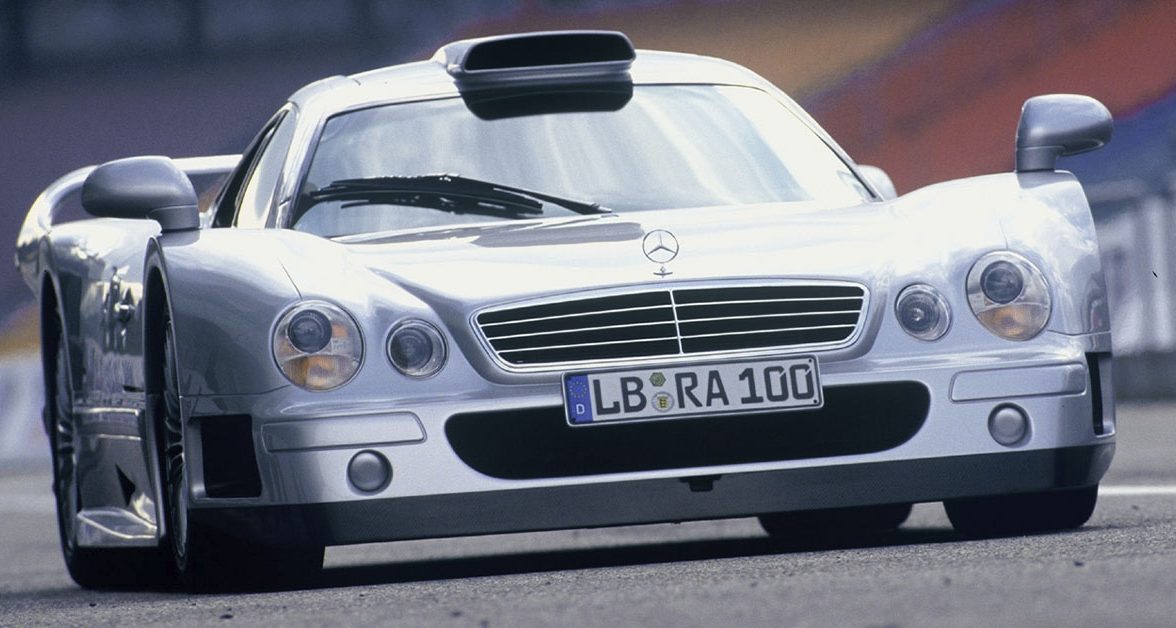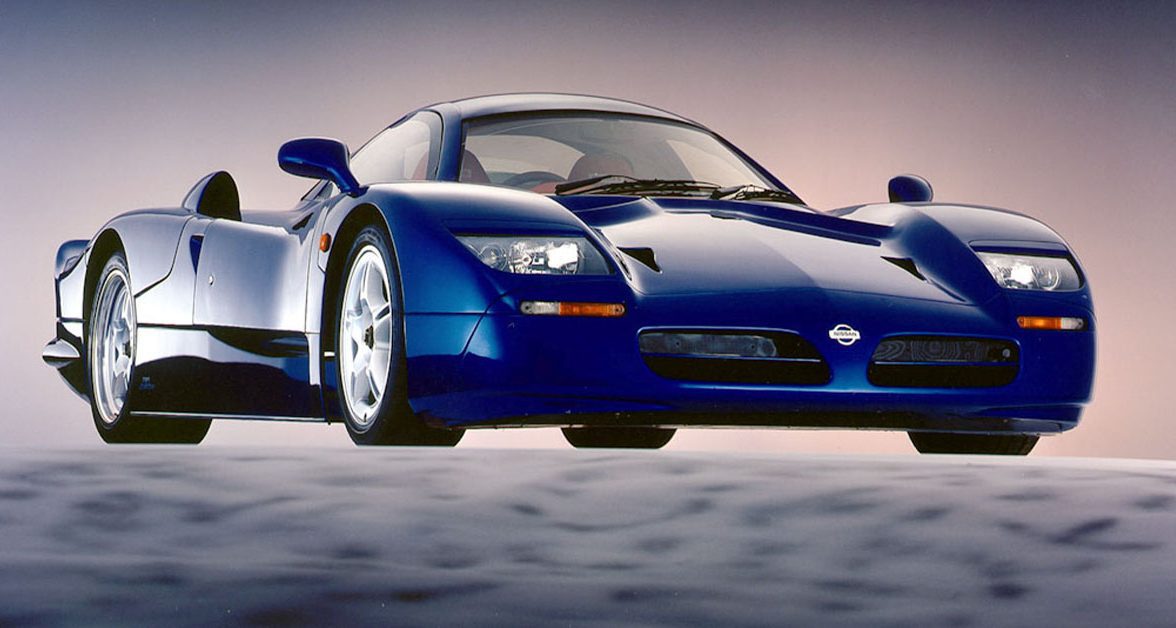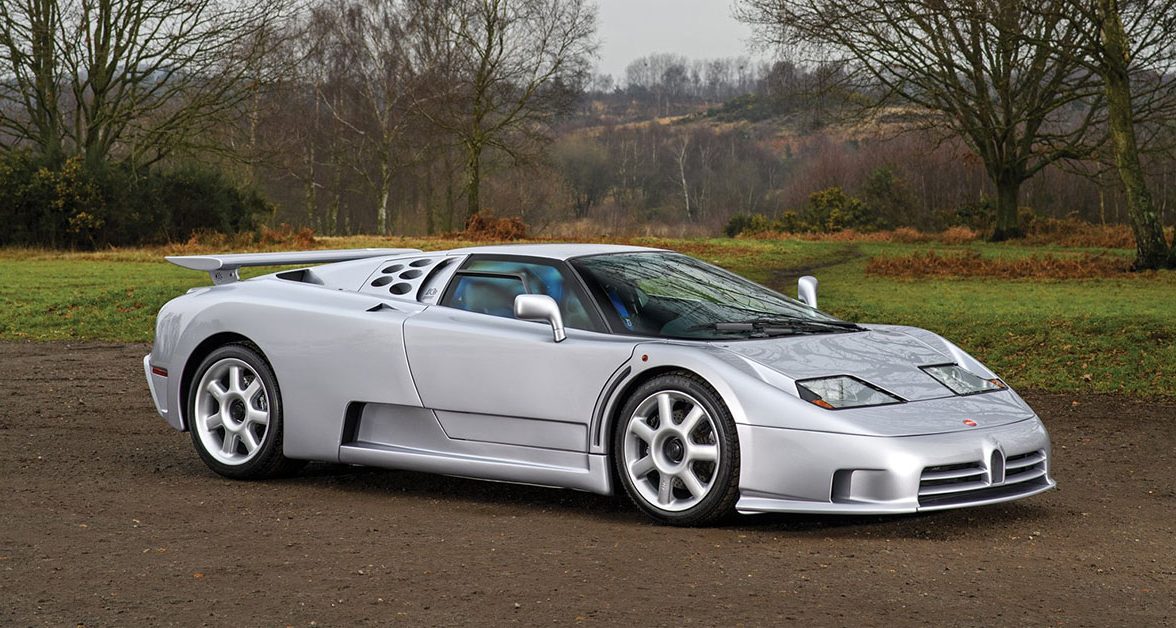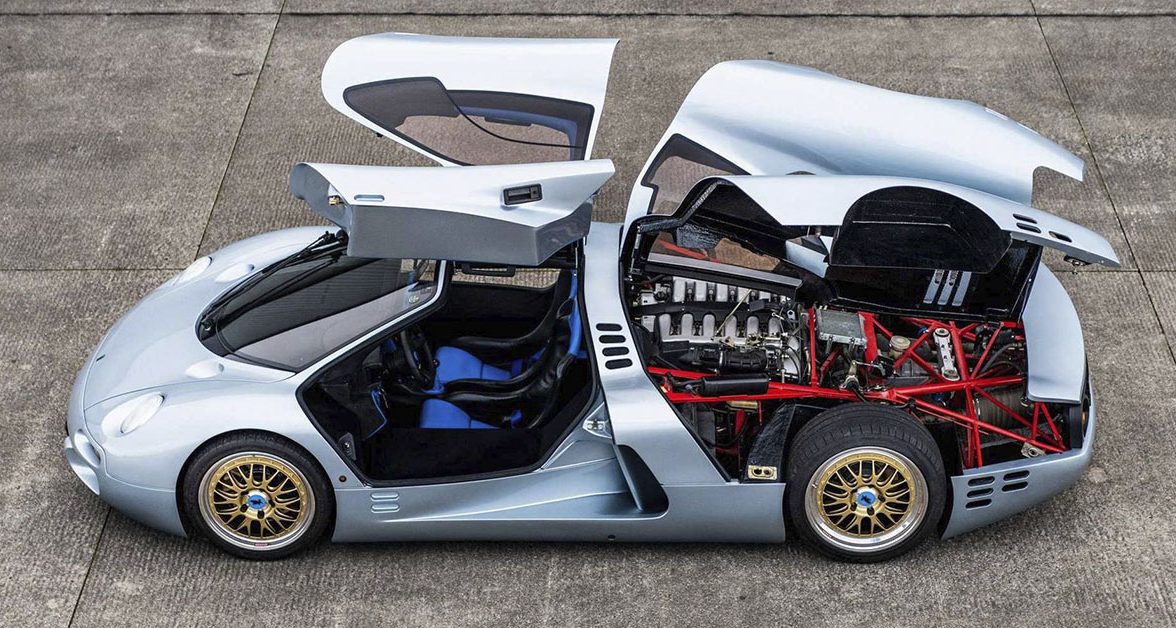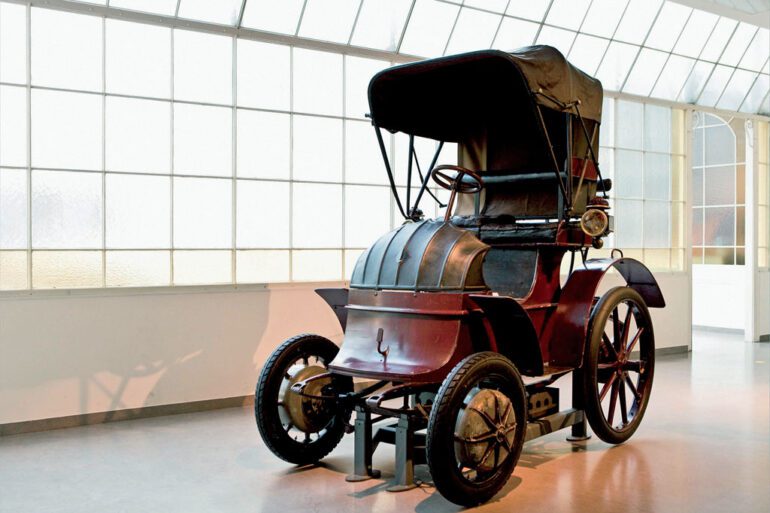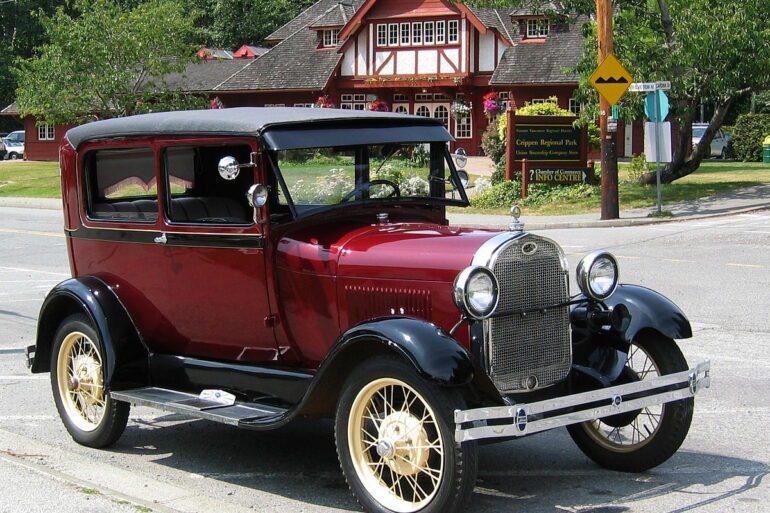The Forgotten Supercars Of The 1990s
Updated August 2023 by Eduardo Zepeda
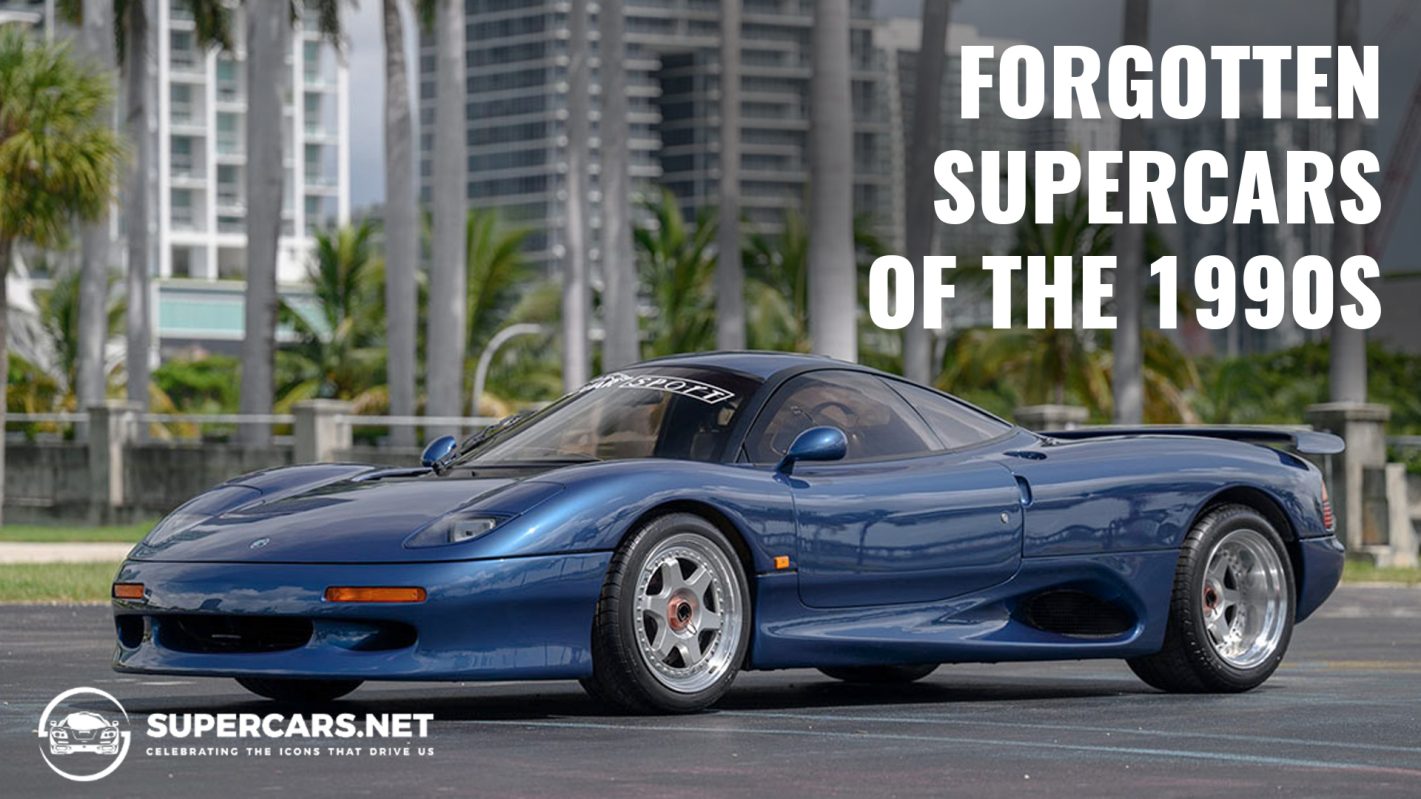
Despite being groundbreaking and stunning, these nineties supercars are often overlooked
About Our Selections
The 1990s was a golden era for supercars. With the economy booming and technology rapidly advancing, automakers were able to produce some of the most iconic and groundbreaking supercars of all time, many of which set the stage for the cutting-edge vehicles of today.
However, some of these ultra-rare supercars were overshadowed by more popular models, while others were simply too far ahead of their time but at least served as inspiration for subsequent designs.
From the dazzling Isdera Commendatore 112i to the quirky Yamaha OX99-11, these forgotten automotive gems fell into obscurity and became more of a connoisseur's type of car.
Yamaha OX99-11 Concept
A failed Formula One supercar experiment

Why We Picked It:
Late in the 1980s, Yamaha boldly moved into Formula One competition. The company aimed to compete with the other F1 racing teams, thus developing a supercar capable of beating them. The result was the OX99-11.
The car was commissioned by Yamaha's sports division and is powered by a 3.5-liter V12 with natural aspiration. That motor produced 400 horsepower at 10,000 rpm. The engine's output spanned the rear wheels via a six-speed manual gearbox. The car featured a very short wheelbase and weighed 2,500 pounds. The OX99 could go from 0 to 60mph in 3.2 seconds and reach 217 mph.
The extraordinary design and engineering didn't stop with the powerplant. The car was aerodynamically designed and featured a tandem (back-to-back) seating layout. The car's distinctive styling made it stand out to the few aware. IAD, an English firm, was responsible for its creation.
Ypsilon Technology of Milton Keynes, United Kingdom, took over the project. However, the rising price tag and lackluster interest ultimately led to the project's cancellation.
Specifications:
Price: N/A
Engine: 3.5L V12
Power: 400 hp
Torque: 295 lb-ft
Transmission: 6-Speed Manual
Curb Weight: 2,535 lbs
Highlights:
The OX99-11 was also notable for its use of advanced materials and technology. It featured a carbon fiber chassis, body panels, a four-wheel drive system, and active aerodynamics.
The OX99-11 featured a carbon fiber monocoque chassis, which helped keep its weight relatively low and contributed to its performance-oriented design.
Learn More:
Aston Martin V8 Vantage V550
Nineties' supercar killer
Why We Picked It:
The Aston Martin 550 Vantage, which first hit the market in the early 1990s, has won the hearts of luxury sports car fans ever since.
The Vantage 550 has a contoured hood that conceals a 5.3-liter twin-supercharged V8 engine capable of 550 horsepower. In just over 4 seconds, it can go from 0 to 60 mph when paired with a 6-speed manual transmission.
The Vantage 550 is ideal for maneuverability and stability thanks to its lightweight aluminum chassis and body. It is lightweight (about 3,400 pounds) while providing a solid driving experience.
With its classic good looks, exciting performance, and enduring appeal, the Aston Martin Vantage 550 has become an international icon representing the best of British motoring. There's no other vehicle quite like the Aston Martin 550 Vantage.
It's still highly sought after by collectors because of its status as one of the best sports cars ever made. When asked about his favorite car, Jeremy Clarkson replied, "The Aston Martin V8 Vantage is the best car I've ever driven. It's fast, it's beautiful, and it's incredibly well-engineered."
Specifications:
Price: $80,000–$150,000
Engine: 5.3L Twin-Supercharged V8
Power: 550 hp
Torque: 550 lb-ft
Transmission: 6-Speed Manual,
Curb Weight: 4,387 lbs
Highlights:
The 550 Vantage was one of the first Aston Martins designed by Ian Callum, who would later develop some of Aston Martin's most iconic cars, like the DB9 and the Vantage.
In the 550, Aston Martin introduced the first V8 engine to be twin-supercharged. Only the McLaren F1 could compete with the 550 in terms of power, which was 200 more than the Porsche Turbos. The 550 beat the Lamborghini Diablo in a drag race.
Learn More:
Jaguar XJR-15
A raw, street-legal race car
Why We Picked It:
The XJR-15 was a limited-production supercar that Jaguar Sport, a joint venture between Jaguar and TWR, built for a brand-new series called the Intercontinental Challenge.
The design was loosely based on the XJR Group-C cars TWR manufactured for Jaguar. Thus, it retained the XJR-8's 6-liter engine and basic chassis layout. Peter Stevens drew a new body, which he thought was more distinctively Jaguar.
Jaguar Sport fitted bumpers blinkers and raised the overall clearance for clientele wishing to use the car on the road. This greatly affected overall performance as the undertray aerodynamics and suspension were optimized for a shallow ride height.
The car's mechanical design was based on the Le Mans-winning Jaguar XJR-9, and Peter Stevens, who later styled the McLaren F1, created an aerodynamic body for it.
The powertrain comprised a naturally aspirated 6.0-liter Jaguar V12 engine, churning out 450 horsepower and 420 lb-ft of torque, spinning the rear wheels via a five-speed manual gearbox. The Jaguar XJR-15 had a 0 to 60 mph time of 3.2 seconds and a top speed of 191 mph.
Specifications:
Price: $1,270,000
Engine: 6.0L V12
Power: 450 hp
Torque: 420lb-ft
Transmission: 5 -Speed Manual
Curb Weight: 2,315 lbs
Highlights:
The XJR-15 had a minimalist interior with a focus on driver involvement. It featured a spartan cockpit with a central driving position, similar to the McLaren F1, with two passenger seats flanking the driver.
The car featured advanced aerodynamic components, including a prominent rear wing and a front splitter, which helped generate downforce and improved high-speed stability.
Learn More:
Porsche 911 GT1 Strassenversion
An insane homologation
Why We Picked It:
Created to homologate Porsche's 911 GT1 contender, the street version, sometimes called 'Strassenversion,' is one of the most fierce and rare 911s. Apart from the sparse interior, little differentiates the GT1 from its full-on, race-ready counterpart.
The GT1's turbocharged flat-six engine sits in front of the rear axle. It's supported by chassis tubes instead of the typical 911 rear subframe, and sitting behind the engine is a longitudinal six-speed transmission.
The GT1 was based on the 993 body shell but with modified exterior panels and a substantial roll cage supporting the engine, gearbox, and suspension. In almost every way, the GT1 was a purpose-built race car. It had a carbon fiber body, a full-width wing, a tiny cockpit, and 600 horsepower.
Compared to the Le Mans GT1s, the road-going version had a higher ride height, softer suspension, road-going gear ratios, and steel brakes, which replaced the race car's carbon discs. The engine was only slightly detuned from the race version, and a complete interior included sport seats and an entire dashboard from the 993 line.
Specifications:
Price: $5,000,000
Engine: 3.2L Twin-Turbocharged Flat-Six
Power: 544 hp
Torque: 442 lb-ft
Transmission: 6-Speed Manual
Curb Weight: 2,646 lbs
Highlights:
The Porsche 911 GT1 Strassenversion was a road-legal version of a Le Mans-winning race car with only 25 examples ever produced.
It had incredibly high performance, with a top speed of around 180 mph and a 0-62 mph acceleration time of under 4 seconds.
Learn More:
Cizeta Moroder V16T
An ultra-rare Italian masterpiece
Why We Picked It:
The Cizeta-Moroder V16T, named for its unconventional drivetrain, refines the Miura idea by pairing a transverse V16 engine making 540 horsepower and 400 lb-ft of torque with a longitudinal five-speed manual transmission.
Midway through the 1980s, Claudio Zampolli conceived of Cizeta, and by 1988, he had a completely functional prototype. Marcello Gandini's finished product for Lamborghini seemed like a crude Diablo, but in reality, it was a masterpiece in its own right.
After receiving Gandini's new Countach concept, Lamborghini made significant changes, including eliminating the designer's trademark notched rear-wheel arches. Disappointed, Gandini went to Cizeta instead, who promised to keep his design untouched.
The V16 engine, whose length required its installation transversely, was the cause of the car's wide body. The timing systems of the two grafted flat-plane V8s shared the center space. The transmission, which was placed transversely, only needed to receive input from one of the gearsets. The block was inspired by two Ferrari V8 engines, but it required a one-of-a-kind casting to realize its full potential.
Specifications:
Price: $700,000-$1,200,000
Engine: 6.0L V16
Power: 540 hp
Torque: 400 lb-ft
Transmission: 5-Speed Manual
Curb Weight: 3,750 lbs
Highlights:
The V16T had a top speed of 242 mph and a 0–60 mph acceleration time of just 4.0 seconds. It was also one of the most expensive cars on the market at the time, with a starting price of $800,000.
Marcello Gandini, a renowned automotive designer, is responsible for the V16T's striking and distinctive design. Gandini first used this design language on Lamborghini's iconic cars, like the Countach.
Learn More:
Venturi 400 GT
A French supercar with a kick
Why We Picked It:
The 400 GT was the first car ever built with carbon brakes as standard equipment, and it continues to be one of the best-performing French cars ever produced.
The Venturi 400 GT, a road-going version of the Challenge, is an example of the Gentlemen Drivers Trophy. The volume of the front and rear wings is absorbed, a rear spoiler of the Ferrari F40 type is attached, and the front and rear bumpers are reworked from the ground up.
A Renault-sourced 3.0, twin-turbo PRV V6 engine produces 402 horsepower and 383 pound-feet of torque. The car has a five-speed manual transmission sends power to the rear wheels. The Venturi 400 GT can reach its top speed of 180 mph from 0 to 60 mph in 4.7 seconds.
The headlights can be retracted fully at any time but are only partially visible and significantly widened. The rearview mirrors have been upgraded to compensate for the large wings and tail fin. Finally, the ultimate Supercar has a massive side air outlet in front of the rear wheels and gorgeous 18-inch OZ wheels. The cabin has a pretty sporty look once you open the door.
Specifications:
Price: $40,000-$70,000
Engine: 3.0L Twin-Turbocharged V6
Power: 402 hp
Torque: 383 lb-ft
Transmission: 5-Speed Manual
Curb Weight: 2,535 lbs
Highlights:
From 1992 to 1994, Venturi Automobiles produced the Venturi GT 400, a French supercar. It was designed by Philippe Boulay.
The Venturi GT 400 was notable for its carbon fiber construction, which helped to make it one of the lightest supercars of its time.
Learn More:
Mercedes CLK GTR
The homologation beast
Why We Picked It:
Mercedes-Benz built the CLK GTR to compete against manufacturers like Ferrari and Porsche in the FIA GT Championship. To have the prototype ready for the 1997 season, a CLK racer and road car components were mashed together.
Despite abandoning the 1999 GT1 class, Mercedes-Benz was forced to fulfill its promises to customers by producing 25 road-legal homologation variants. The base engine for customer vehicles was a 6.9-liter V12, while the 7.3-liter engine was available.
A massive 6.9-liter naturally aspirated V12 engine that produced 612 horsepower and 571 pound-feet of torque powered the CLK GTR. It can reach a top speed of 214 mph and 60 mph in under 3.8 seconds.
A custom instrument cluster, a leather-wrapped steering wheel with airbag integration, air conditioning, an audio system, adjustable pedals, four-point seat belts, and luggage pods large enough to hold seven suitcases were just some of the finer touches inside.
Specifications:
Price: $8,500,000
Engine: 6.9L V12
Power: 612 hp
Torque: 571 lb-ft
Transmission: 6-Speed Manual
Curb Weight: 3,175 lbs
Highlights:
The Mercedes-Benz CLK GTR was initially developed as a race car for the FIA GT1 Championship with a carbon fiber and Kevlar body.
The CLK GTR is extremely rare because only 30 road-legal variants were made.
Learn More:
Nissan 390 GT1
A Le Mans winner for the road
Why We Picked It:
To compete in the Le Mans GT1 Class, manufacturers were required to produce at least one road-legal version of their race cars; thus, Nissan built the fastest and most expensive road car they've ever made.
Formerly revered for his work on the Aston Martin DB7, designer Ian Callum of Tom Walkinshaw Racing created the R390 GT1. The R390 GT1 borrows the 300ZX's headlights and the style of the Nissan family with its dual front grilles.
Extensive scale model wind tunnel testing was used to perfect the R390 GT1's long-tail carbon fiber form. A comprehensive instrument cluster and leather-upholstered racing seats for the driver and passenger are among the typical road vehicle amenities found inside.
The VRH35L twin-turbocharged 3.5-liter V8 engine with electronic sequential port fuel injection is located behind the driver and is the beating heart of this genuine supercar, producing 549 horsepower.
In the event of wheelspin, the R390 GT1's launch control and traction control systems cut fuel to certain cylinders to reduce power. As anticipated, the R390 GT1's performance is mind-blowing. It can accelerate from 0 to 60 mph in under 4 seconds.
Specifications:
Price: $5,000,000
Engine: 3.5L Twin-Turbocharged V8
Power: 549 hp
Torque: 470 lb-ft
Transmission: 5-Speed Manual
Curb Weight: 2,420 lbs
Highlights:
The short-throw gear lever for the Xtrac six-speed sequential gearbox and tiny racing steering wheel are reminders of the close alliance between the road car and the race car variant.
The race car version of the Nissan R390 GT1 captured four out of the top ten spots in the 1998 Le Mans 24-hour race.
Learn More:
Bugatti EB110 Super Sport
An EB110 on steroids
Why We Picked It:
The Bugatti EB110 GT, which often comes up on forgotten supercars of the 1990s, pays homage to the brand's Type 251 race car with its iconic blue paint. However, one variant is even rarer than the EB110 GT; we refer to the EB110 Super Sport.
The first production model of the Bugatti EB110 was unveiled on Ettore Bugatti's 110th birthday, September 15, 1991. However, Bugatti didn't fully utilize the EB110's quad-turbocharged 3.5-liter V12 until almost a year later, when the 603-horsepower EB110 Super Sport (or SS) debuted.
Appearance-wise, it's not much different from a regular EB110. The SS model retained the flat and broad characteristics Marcello Gandini designed, especially on the front fascia, but it was given extra aerodynamic cues. A reconfigured electronic control unit (ECU), larger injectors, and a freer-flowing exhaust system allowed the same 3.5-liter V12 to generate over 60 more horsepower than the standard EB110 (541 hp) and also had all-wheel-drive.
The Supersport was 330 pounds (150 kg) lighter than the 110 GT. Its reduced mass and enhanced propulsion system increased its top speed to 216 mph. The EB110 SS could accelerate to 60 mph in 3.2 seconds and reach 221 mph.
Specifications:
Price: $2,500,000–$3,500,000
Engine: 3.5L V12
Power: 603 hp
Torque: 479 lb-ft
Transmission: 6-Speed Manual
Curb Weight: 3,126 lbs
Highlights:
The Super Sport's quad-turbocharged V12 engine produced 603 horsepower, which allowed it to accelerate from 0 to 60 miles per hour in 3.2 seconds and achieve 216 mph. It can still compete with many contemporary supercars.
Agility and handling were given top billing with the Super Sport. It managed to stay under 3,126 pounds by utilizing lightweight materials, an all-wheel drive system, and a carbon fiber chassis. Because of this, the vehicle became very agile, quick, and responsive.
Learn More:
Isdera Commendatore 112i
The dazzling German supercar you've never heard of
Why We Picked It:
Even if you're a true automotive enthusiast, there's a good chance you've never heard of the Isdera Commendatore 112i. This ultra-rare supercar is a testament to German craftsmanship and innovation and represents the epitome of exclusivity and engineering excellence in the 1990s.
Under the sleek, aerodynamic body lies the same engine that powers the Pagani Zonda. A Mercedes-Benz-sourced 6.0-liter V12 engine generates 408 horsepower and 425 lb-ft of torque, sending the power to the rear wheels and propelling the Commendatore 112i from 0 to 60 mph in just 4.7 seconds with a top speed of 211 mph. As for the weight, this supercar tips the scales at approximately 3,263 lbs, showcasing its lightweight construction and advanced materials.
The Isdera Commendatore 112i is a remarkable piece of automotive history, combining striking design, potent performance, and unmatched exclusivity. It's a gem for those lucky enough to own or experience it.
Specifications:
Price: $1,300,000
Engine: 6.0L V12
Power: 408 hp
Torque: 425 lb-ft
Transmission: 6-Speed Manual
Curb Weight: 3,263 lbs
Highlights:
The 112i had a very low drag coefficient of just 0.306, thanks to its sleek design and flat underbody.
The Isdera Commendatore 112i never made it into production. The company could not secure the necessary funding, and the only example ever built was sold to a private collector.


